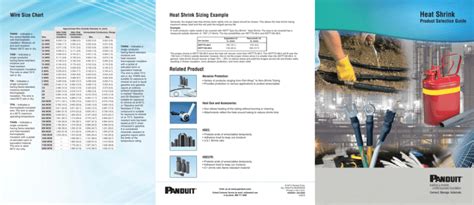Understanding Heat Shrink Tubing
Heat shrink tubing is a flexible, pre-stretched plastic tube that shrinks when exposed to heat. It is made from various materials, such as polyolefin, PVC, PTFE, and silicone, each with unique properties and temperature ranges. When heated above its shrink temperature, the tubing constricts and forms a tight, protective seal around the object it covers.
Types of Heat Shrink Tubing
There are several types of heat shrink tubing available, each with different temperature ranges and properties:
- Polyolefin: A general-purpose material with a wide temperature range and good electrical insulation properties.
- PVC: Offers excellent flexibility and resistance to abrasion, but has a lower temperature range compared to polyolefin.
- PTFE: Provides superior chemical resistance and can withstand high temperatures, making it suitable for harsh environments.
- Silicone: Offers excellent flexibility, high temperature resistance, and good insulation properties.
Heat Shrink Tubing Temperature Ranges
Each type of heat shrink tubing has a specific temperature range at which it shrinks and a maximum continuous operating temperature it can withstand. The following table summarizes the typical temperature ranges for common heat shrink tubing materials:
| Material | Shrink Temperature Range | Maximum Continuous Operating Temperature |
|---|---|---|
| Polyolefin | 90°C – 120°C | -55°C to 135°C |
| PVC | 70°C – 110°C | -30°C to 105°C |
| PTFE | 327°C – 350°C | -67°C to 260°C |
| Silicone | 150°C – 200°C | -50°C to 200°C |
It is crucial to select the appropriate heat shrink tubing material based on the application’s temperature requirements to ensure optimal performance and longevity.
Applying Heat Shrink Tubing
To apply heat shrink tubing, follow these steps:
- Select the appropriate tubing size and material based on the application requirements.
- Cut the tubing to the desired length, allowing for a small overlap on each end of the object being covered.
- Slide the tubing over the object, ensuring it is positioned correctly.
- Apply heat evenly to the tubing using a heat gun, torch, or other suitable heat source. Start from the center and work towards the ends to prevent air bubbles or uneven shrinkage.
- Continue heating until the tubing has fully shrunk and conformed to the object’s shape.
- Allow the tubing to cool before handling or applying any stress to the covered object.

Heat Shrink Recommendations
When selecting heat shrink tubing for a specific application, consider the following recommendations:
Electrical Insulation
For electrical insulation, polyolefin and PVC heat shrink tubing are commonly used. Polyolefin is suitable for most general-purpose applications, while PVC offers improved flexibility and abrasion resistance. Ensure the tubing’s voltage rating and dielectric strength meet the application’s requirements.
High-Temperature Environments
In high-temperature environments, such as automotive engine compartments or industrial machinery, PTFE or silicone heat shrink tubing is recommended. PTFE provides excellent chemical resistance and can withstand temperatures up to 260°C, while silicone offers flexibility and stability at temperatures up to 200°C.
Harsh Chemicals and Solvents
For applications involving exposure to harsh chemicals or solvents, PTFE heat shrink tubing is the best choice. PTFE is highly resistant to most chemicals and solvents, ensuring long-term protection and reliability.
Strain Relief and Mechanical Protection
When used for strain relief or mechanical protection, polyolefin and PVC heat shrink tubing are suitable options. These materials provide good flexibility and durability, protecting wires and cables from abrasion, cuts, and other mechanical stresses.
Color-Coding and Identification
Heat shrink tubing is available in various colors, making it useful for color-coding and identification purposes. Different colors can be used to distinguish between different wire gauges, voltages, or functions, improving organization and maintenance efficiency.
Frequently Asked Questions
-
Can heat shrink tubing be reused?
No, heat shrink tubing is a single-use product. Once it has been heated and shrunk, it cannot be restored to its original size and shape. -
Is it possible to remove heat shrink tubing after it has been applied?
Removing heat shrink tubing after it has been applied is difficult and may damage the covered object. In most cases, the tubing must be cut and replaced if removal is necessary. -
Can heat shrink tubing be used for waterproofing?
While heat shrink tubing provides some level of water resistance, it is not designed for complete waterproofing. For applications requiring waterproofing, specialized products like adhesive-lined heat shrink tubing or waterproof sealants should be used. -
How do I determine the correct size of heat shrink tubing for my application?
To determine the correct size of heat shrink tubing, measure the diameter of the object being covered and select a tubing size with a shrink ratio that will fit snugly after heating. Most heat shrink tubing has a 2:1 or 3:1 shrink ratio, meaning it will shrink to half or one-third of its original diameter when heated. -
Can heat shrink tubing be used for high-voltage applications?
Yes, some heat shrink tubing materials, such as polyolefin and PTFE, are suitable for high-voltage applications. However, it is essential to select tubing with the appropriate voltage rating and dielectric strength for the specific application. Always consult the manufacturer’s specifications and guidelines when using heat shrink tubing in high-voltage environments.
Conclusion
Heat shrink tubing is a versatile and essential component in many electrical, mechanical, and industrial applications. Understanding the temperature ranges and properties of different heat shrink tubing materials is crucial for selecting the appropriate product for a specific application. By following the recommendations and guidelines provided in this article, you can ensure optimal performance, reliability, and protection for your projects involving heat shrink tubing.
When working with heat shrink tubing, always prioritize safety and follow the manufacturer’s instructions for proper application and handling. By doing so, you can take full advantage of the benefits heat shrink tubing offers and create long-lasting, professional-quality solutions for your projects.






Leave a Reply